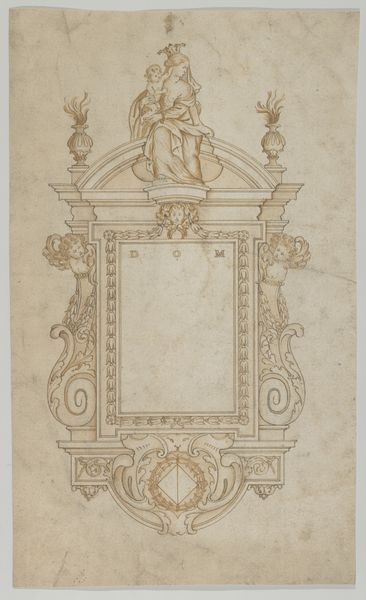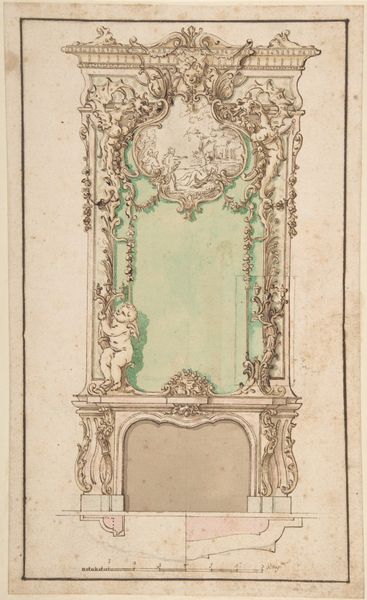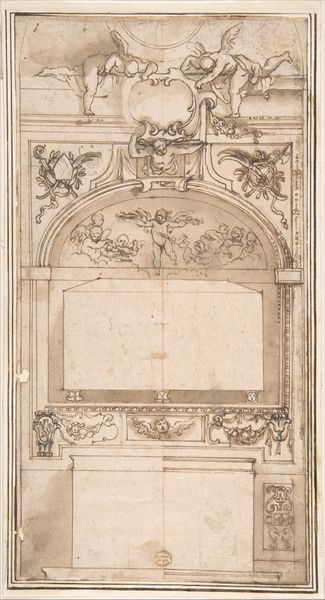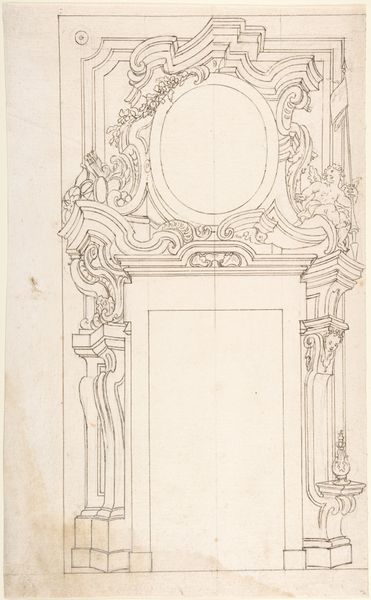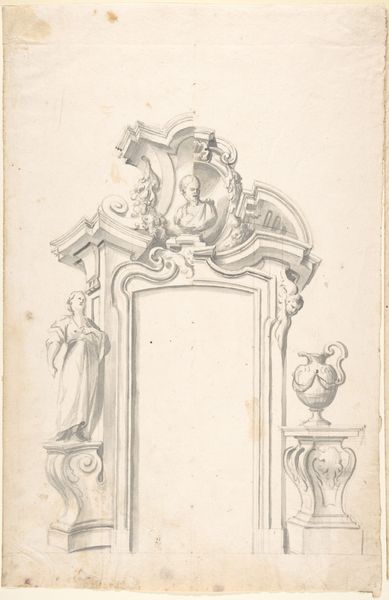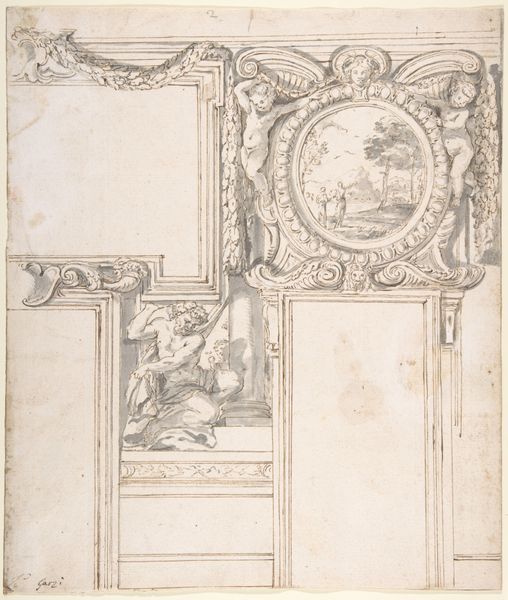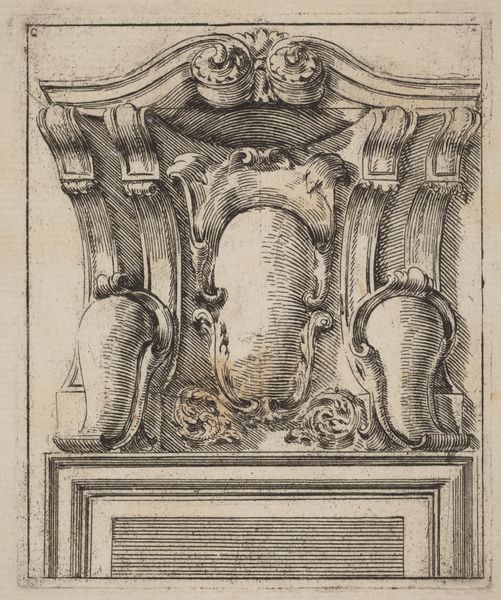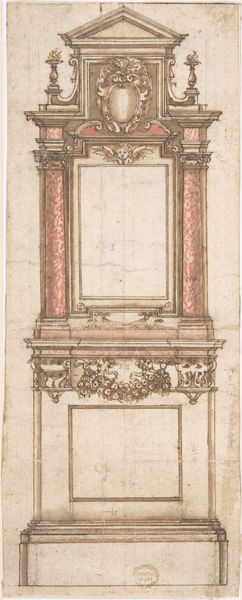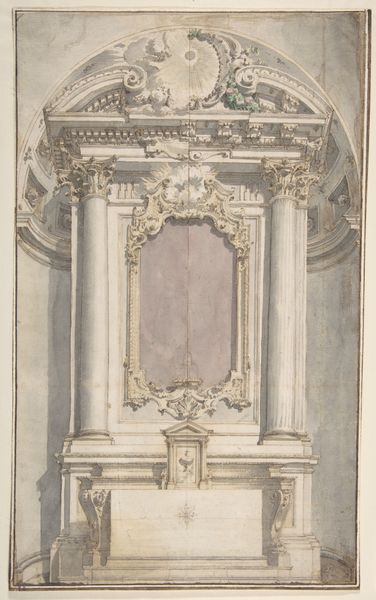
drawing, print, paper, ink, architecture
#
drawing
#
baroque
# print
#
figuration
#
paper
#
ink
#
classicism
#
architecture
Dimensions: 13 7/8 x 9 3/8 in. (35.2 x 23.8 cm)
Copyright: Public Domain
Curator: Looking at this artwork, I immediately think: restrained exuberance. It has such classical elements, rendered with such a light touch. Editor: You've hit upon its character exactly. What we have here is an architectural design rendered in ink on paper. Created sometime between 1631 and 1641, it’s entitled "Design for a Fireplace," and currently resides at the Metropolitan Museum of Art. Curator: Note the clean lines, the careful attention to symmetry, and the restrained use of ornamentation, indicative of the classical influence. Yet, there's also the flamboyance inherent in the Baroque. These paired caryatids and terminal figures, supporting the entablature are perfect examples of Baroque art with the play of light and shadow suggesting a vital energy. Editor: Absolutely. It embodies the visual language employed by elite social circles to reinforce power. Fireplaces of this scale and embellishment weren’t simply functional. The fireplace symbolized wealth, warmth and privilege. Its aesthetic appeal communicated specific socio-political meanings. Curator: Semiotically, each element contributes to this layered meaning. The cartouches, the scrollwork—they are signs referring to power and status within the established social structure of the time. It presents itself through a discourse of taste. Editor: Speaking of structure, one notices that, while attributed to an anonymous creator, designs such as these circulated among workshops, influencing the tastes and decorative choices of an entire era. This makes understanding the artist irrelevant. In short, what you are left with is the network by which taste travels among social structures and individuals of prominence. Curator: Precisely, the elegance of line and the balancing of forms speak to something transcendent, apart from the everyday concerns that drove its commission and display. It speaks of pure form. Editor: I, in turn, am left considering the dialogue that artworks such as these instigate between the patron, artisan, and the audience and the means by which power manifests through art in tangible forms. Curator: The very exercise of analysis clarifies both its artistry and the system that framed its existence.
Comments
No comments
Be the first to comment and join the conversation on the ultimate creative platform.
